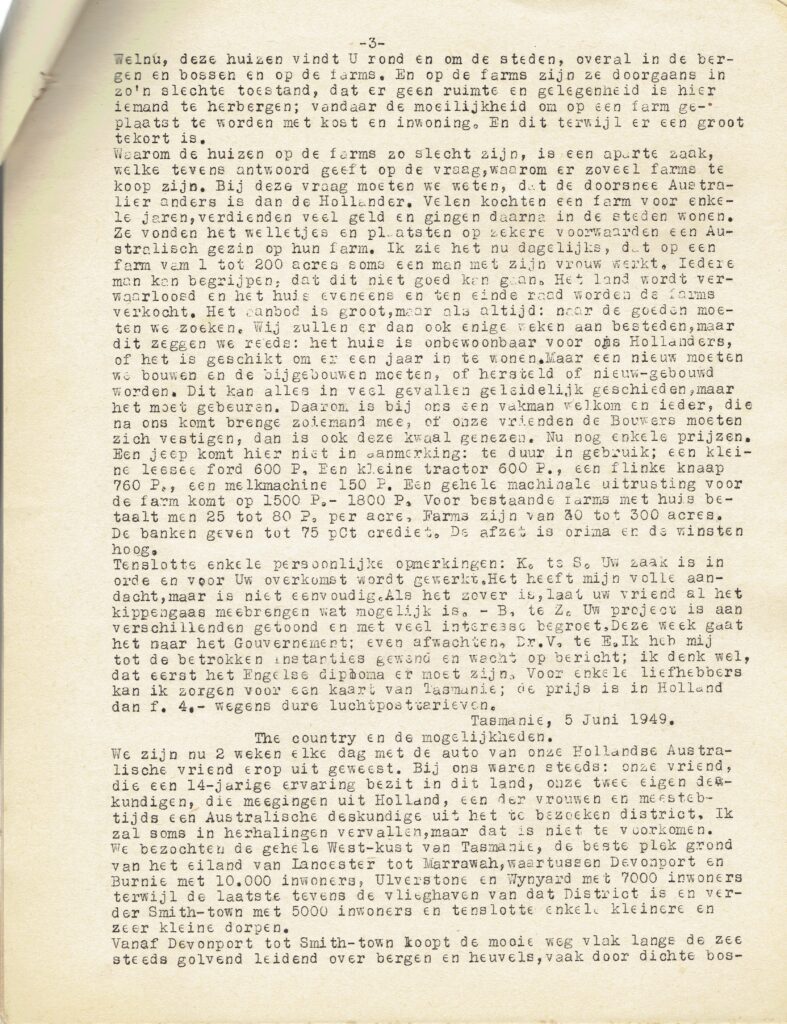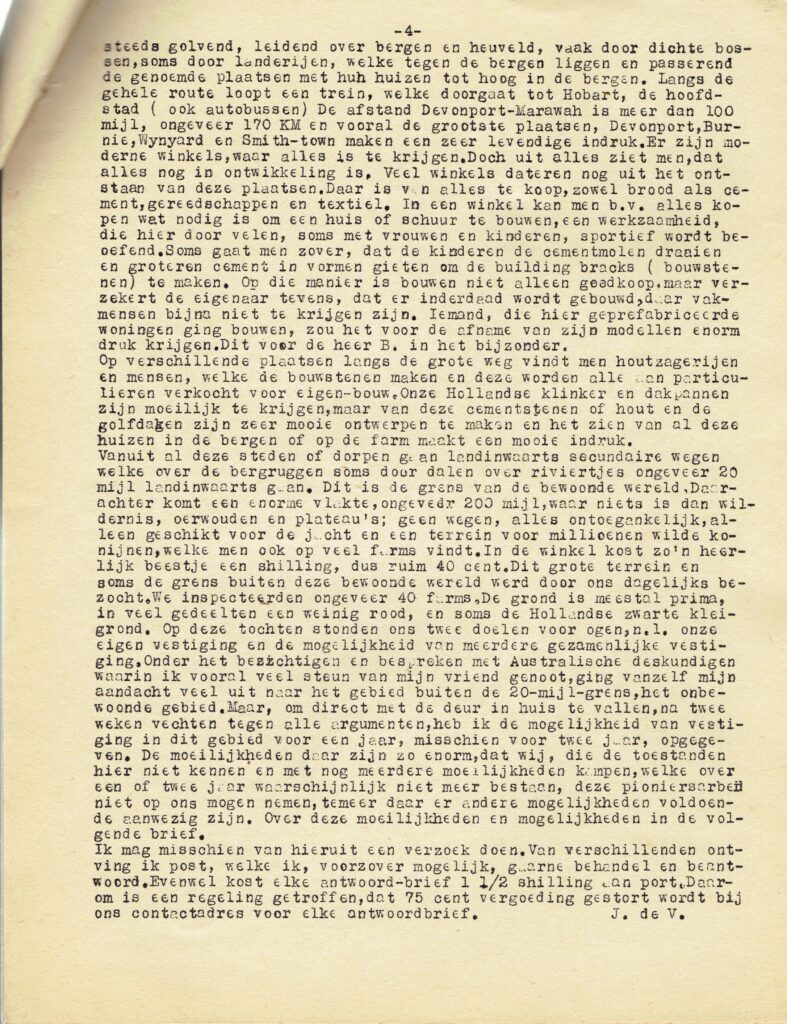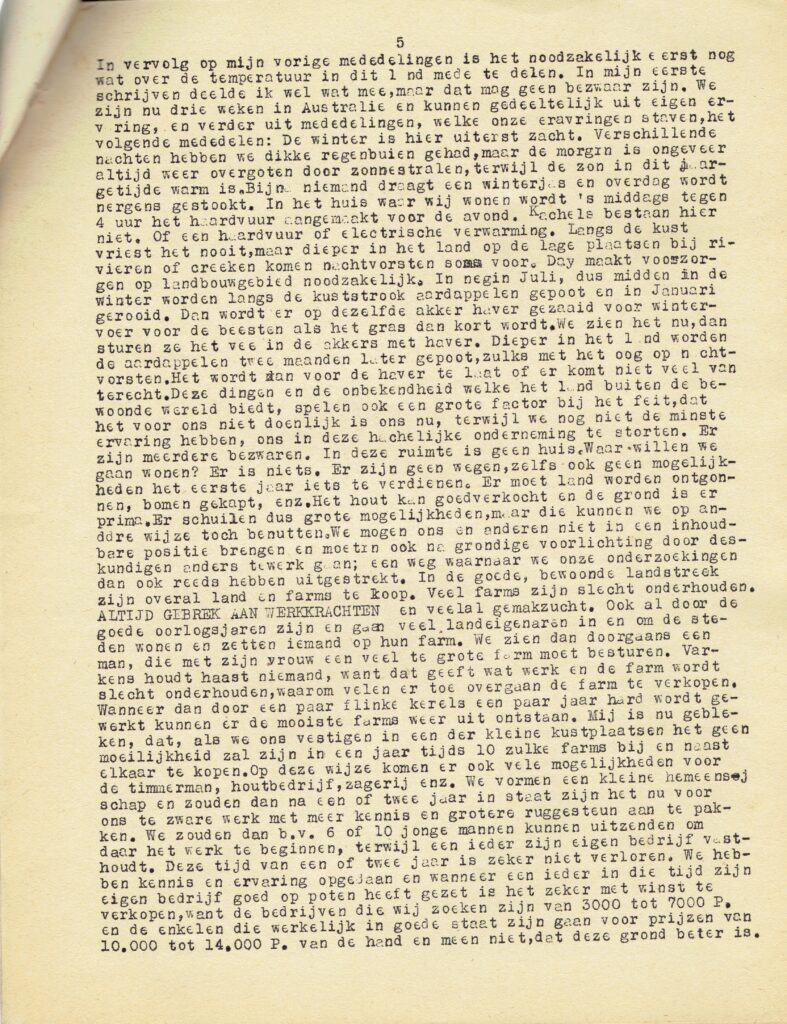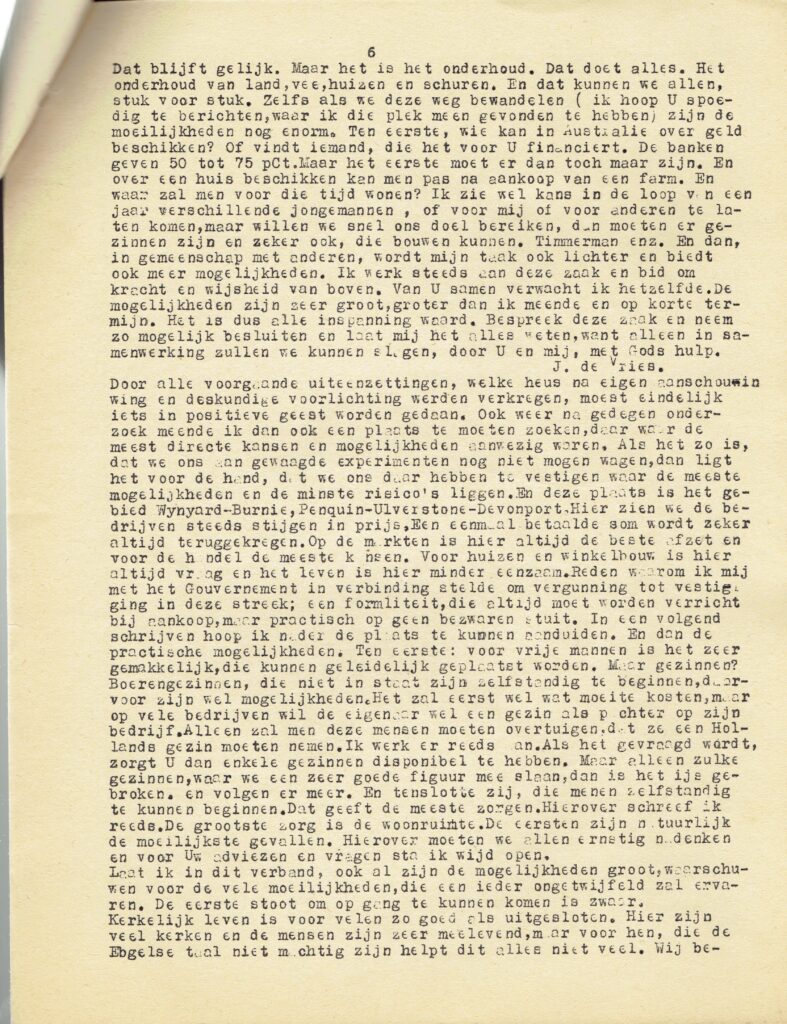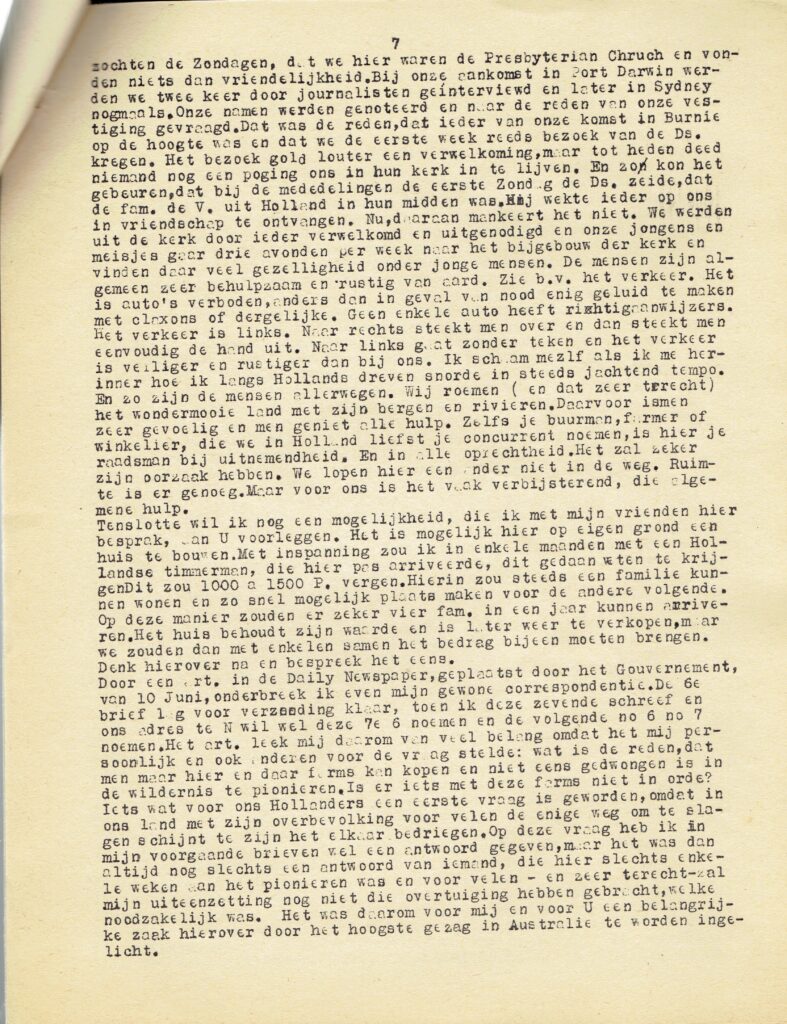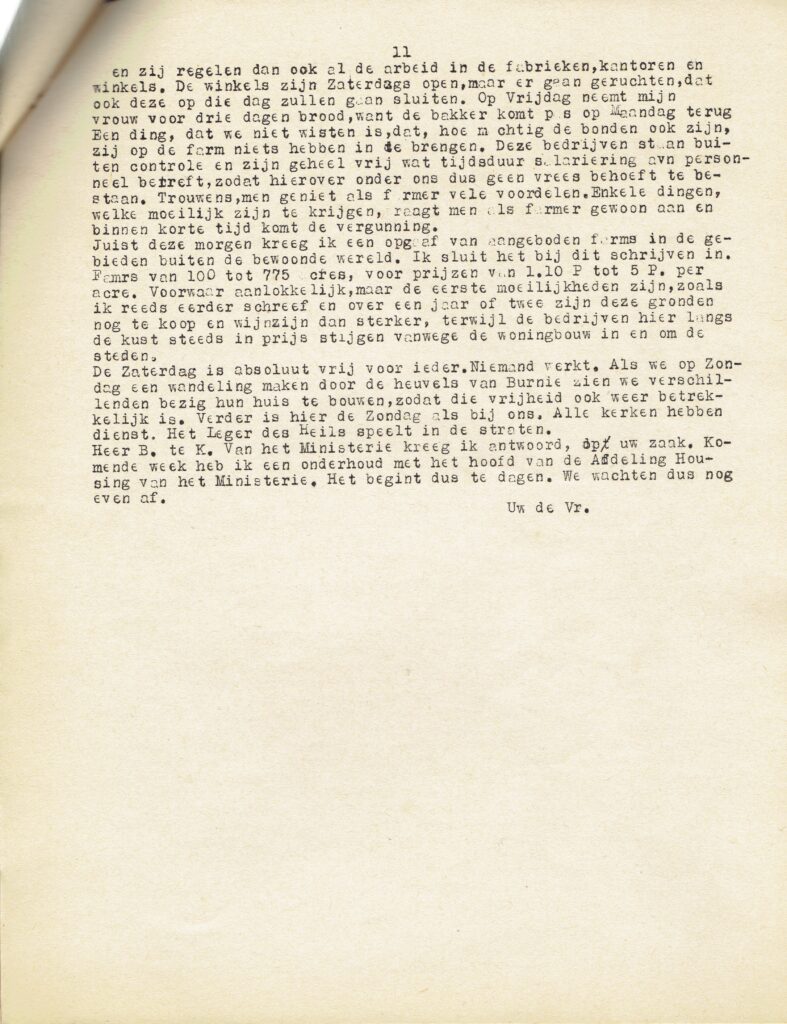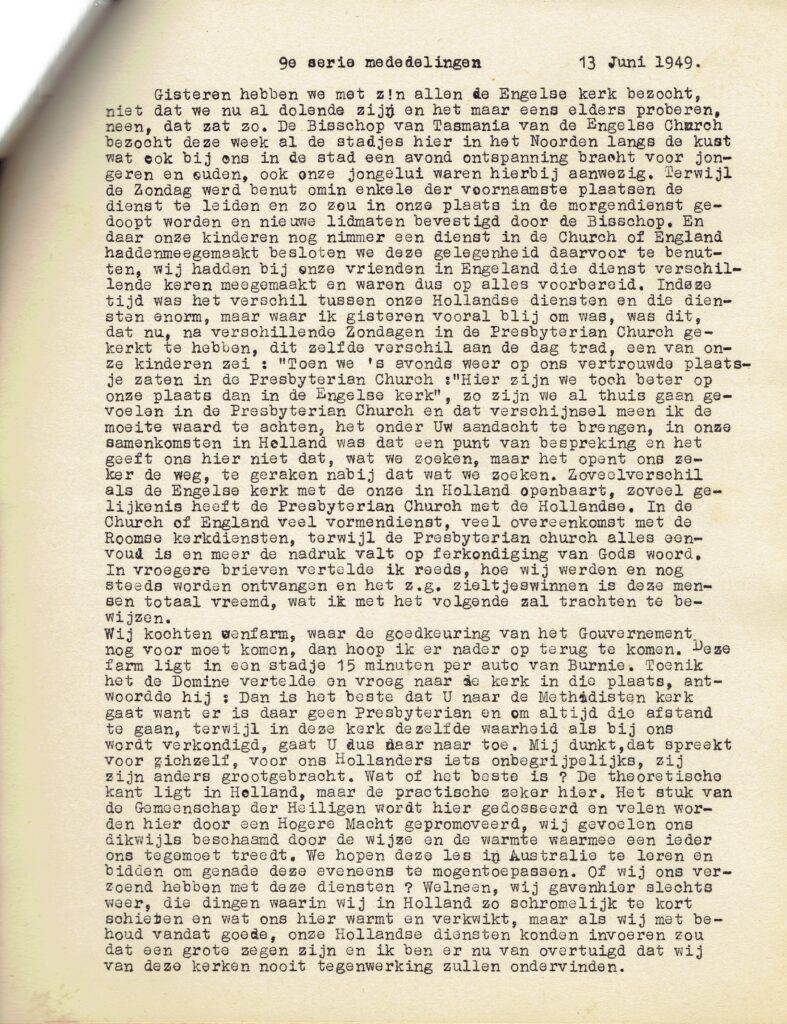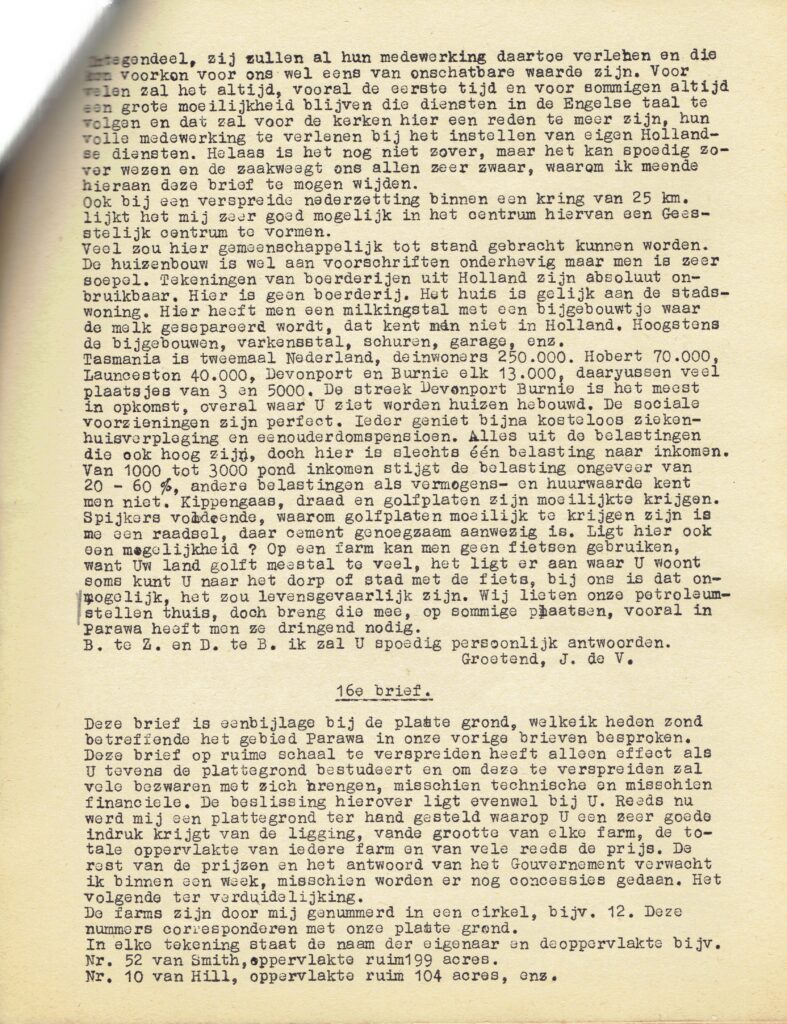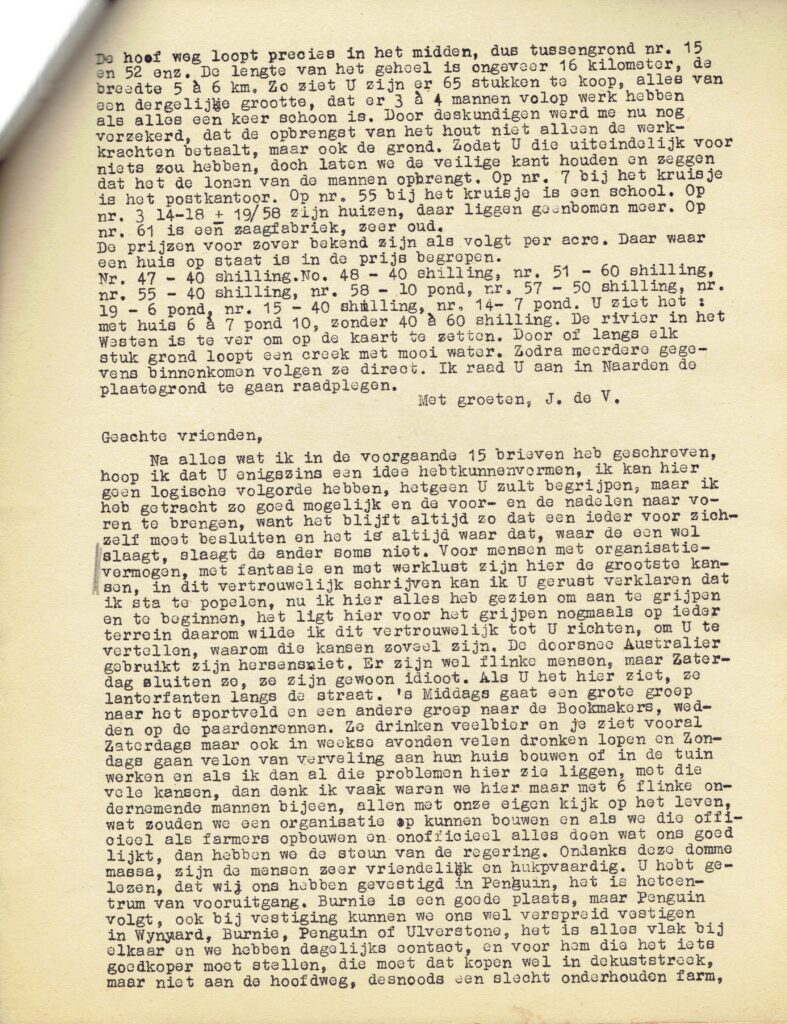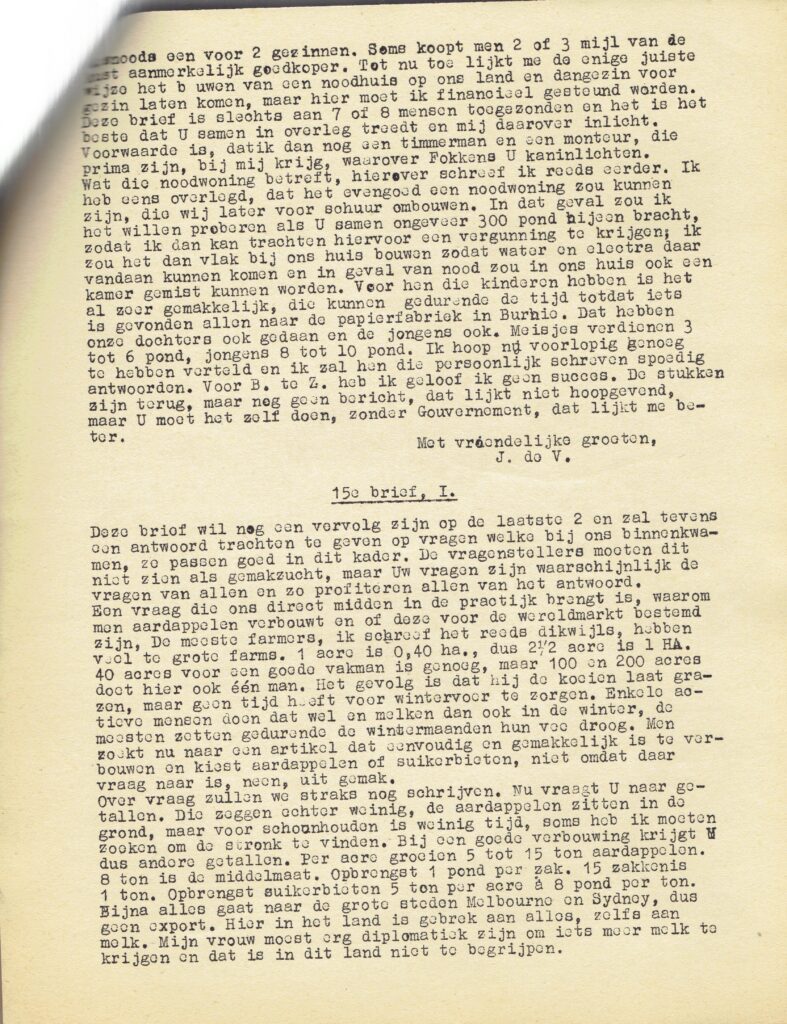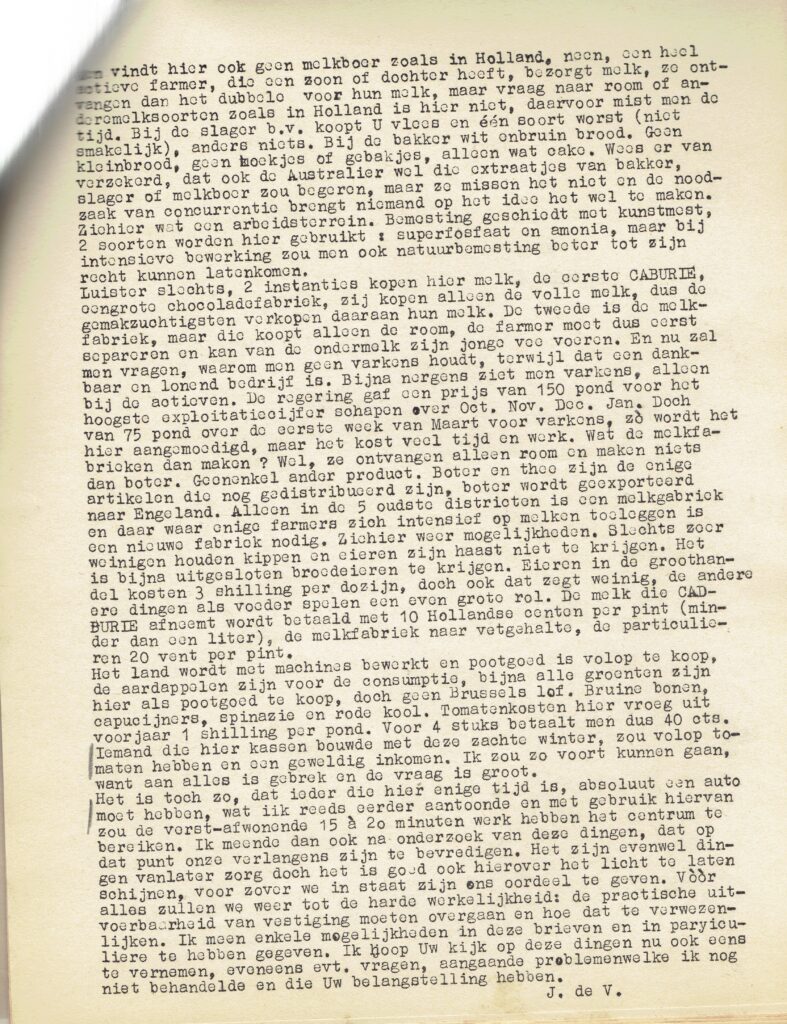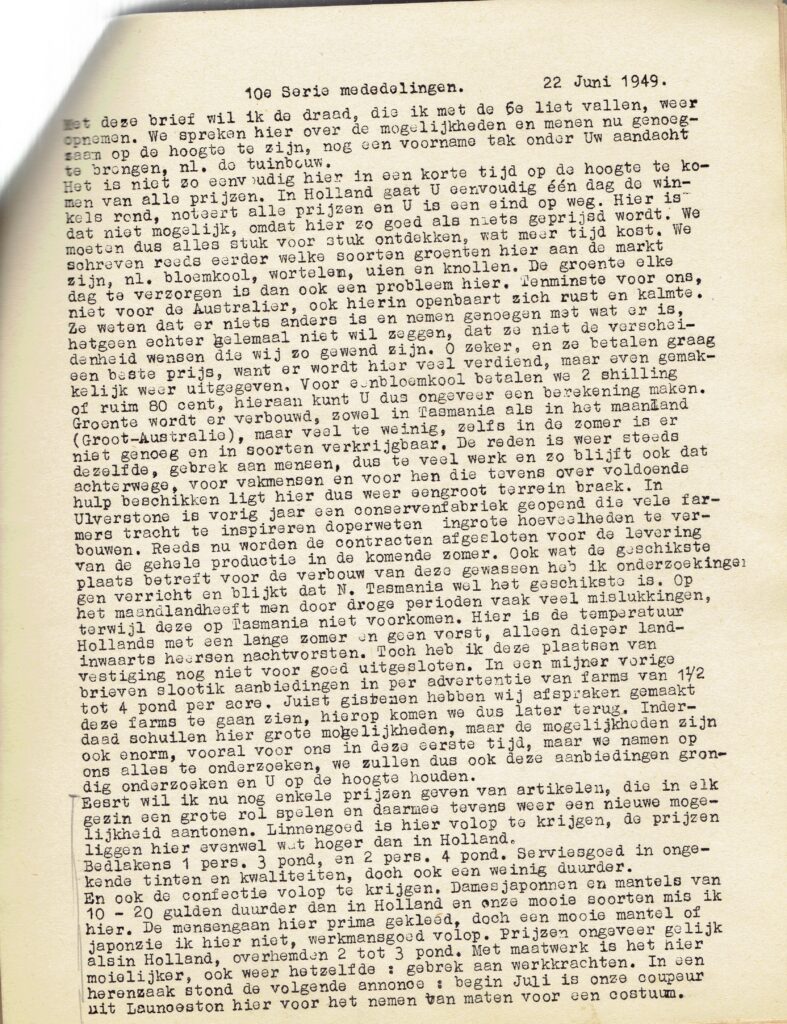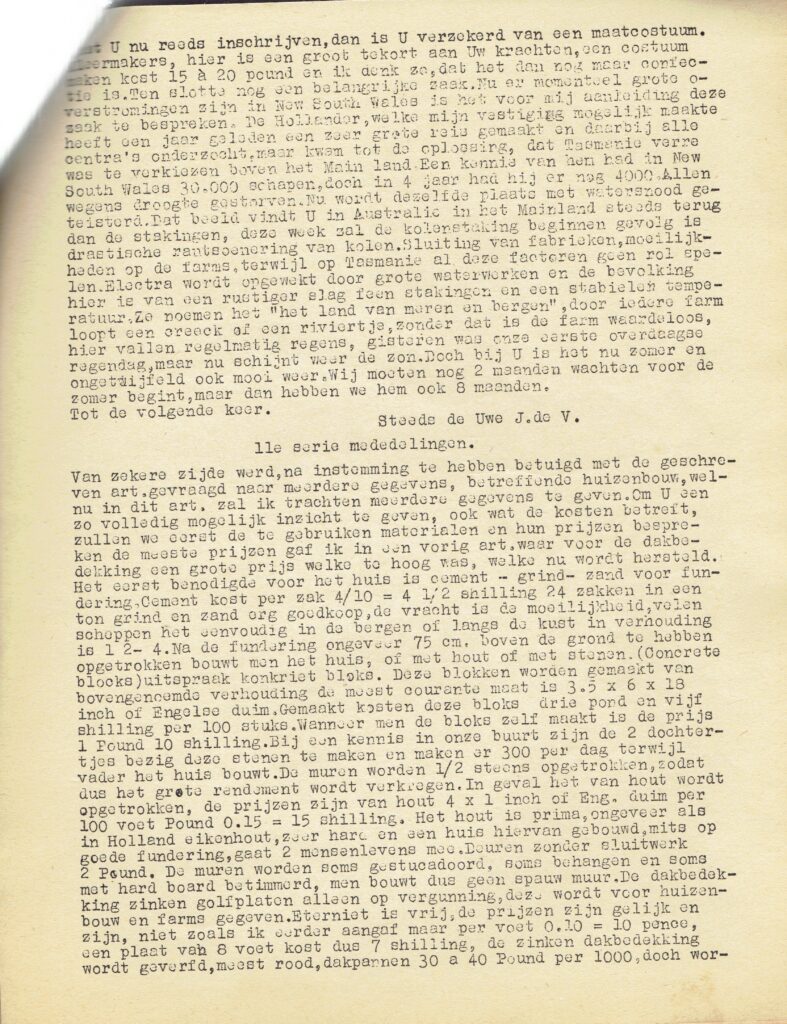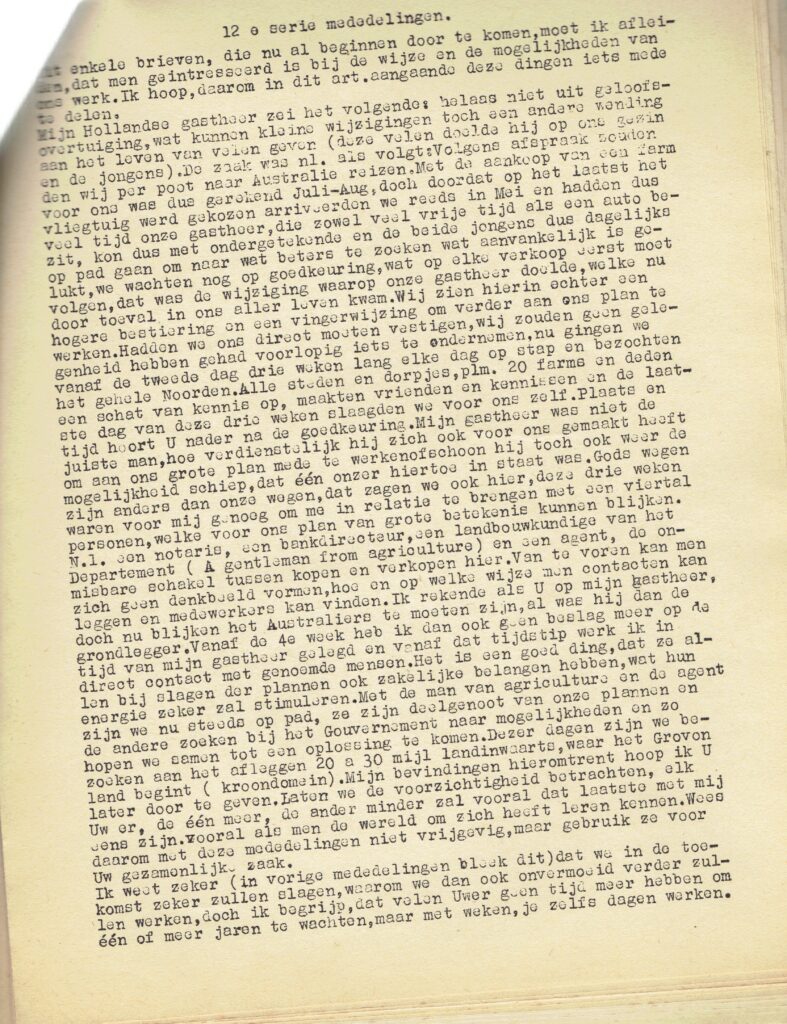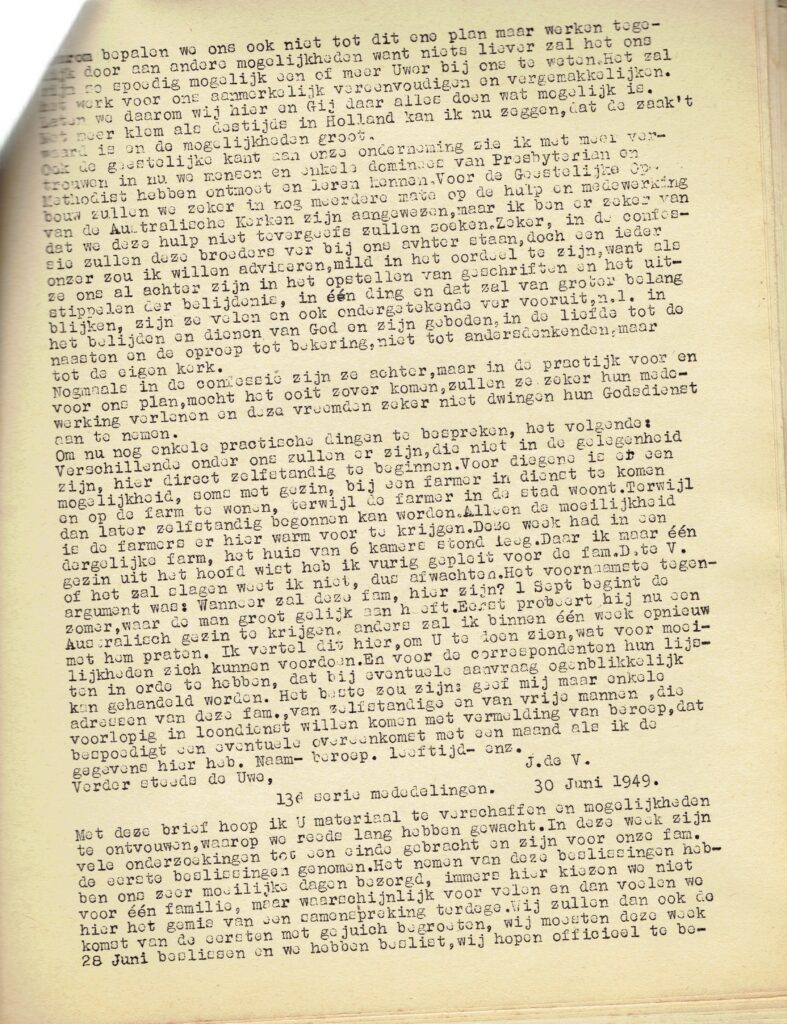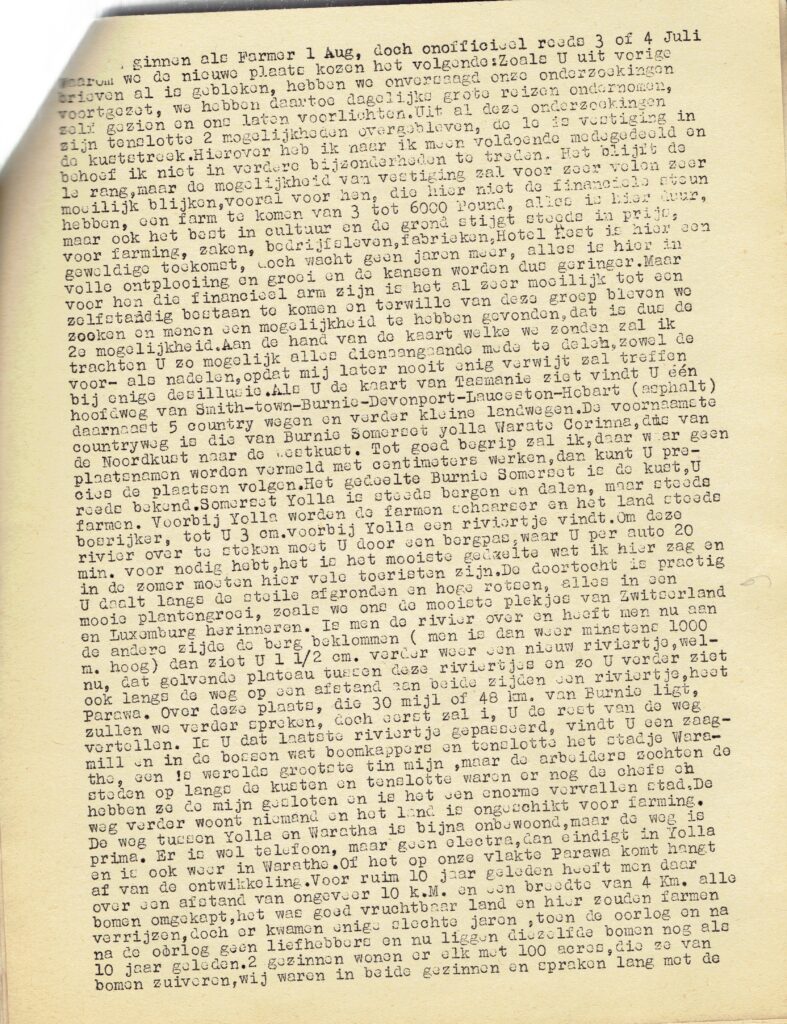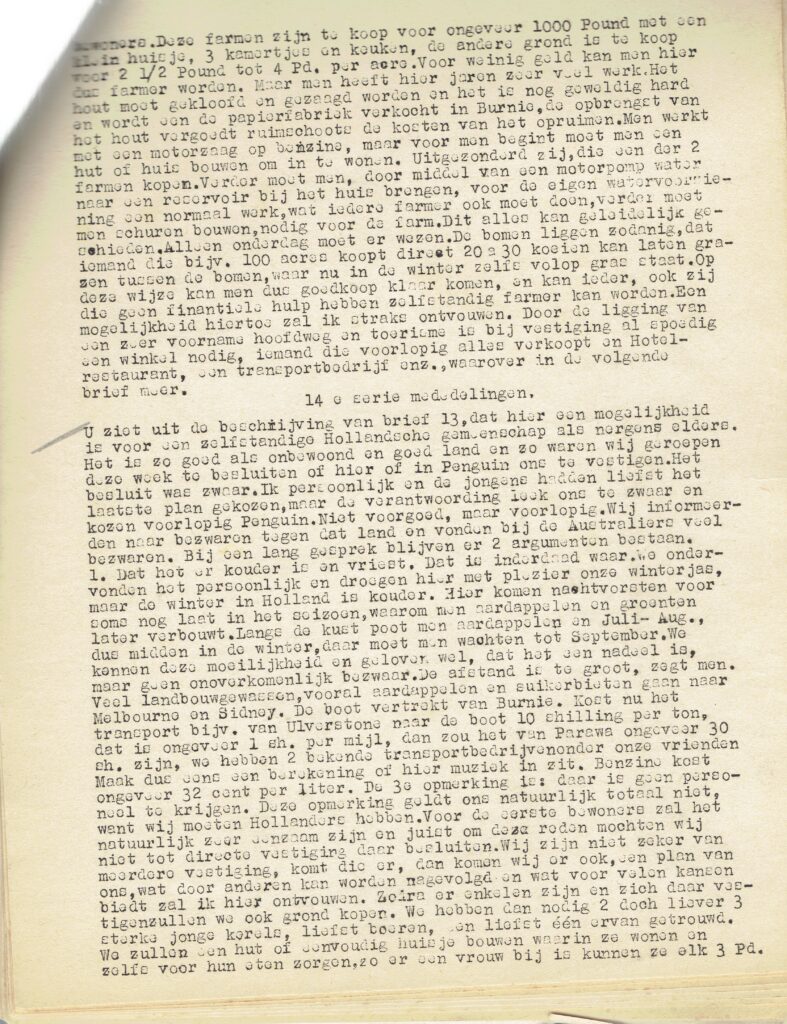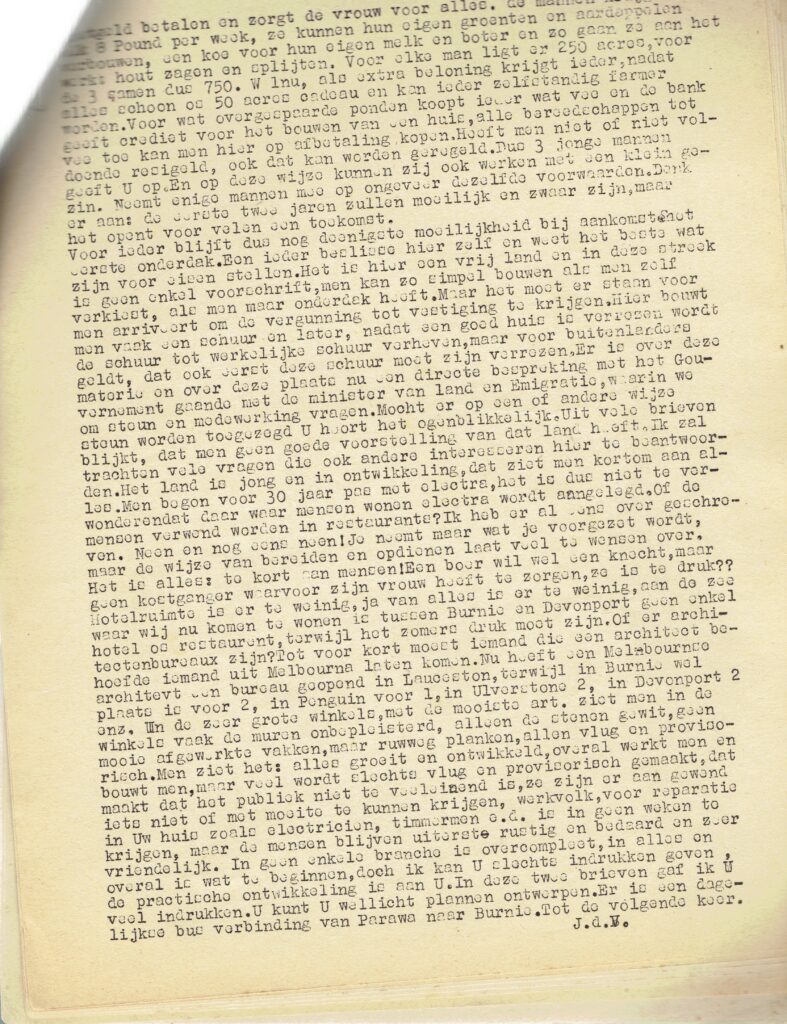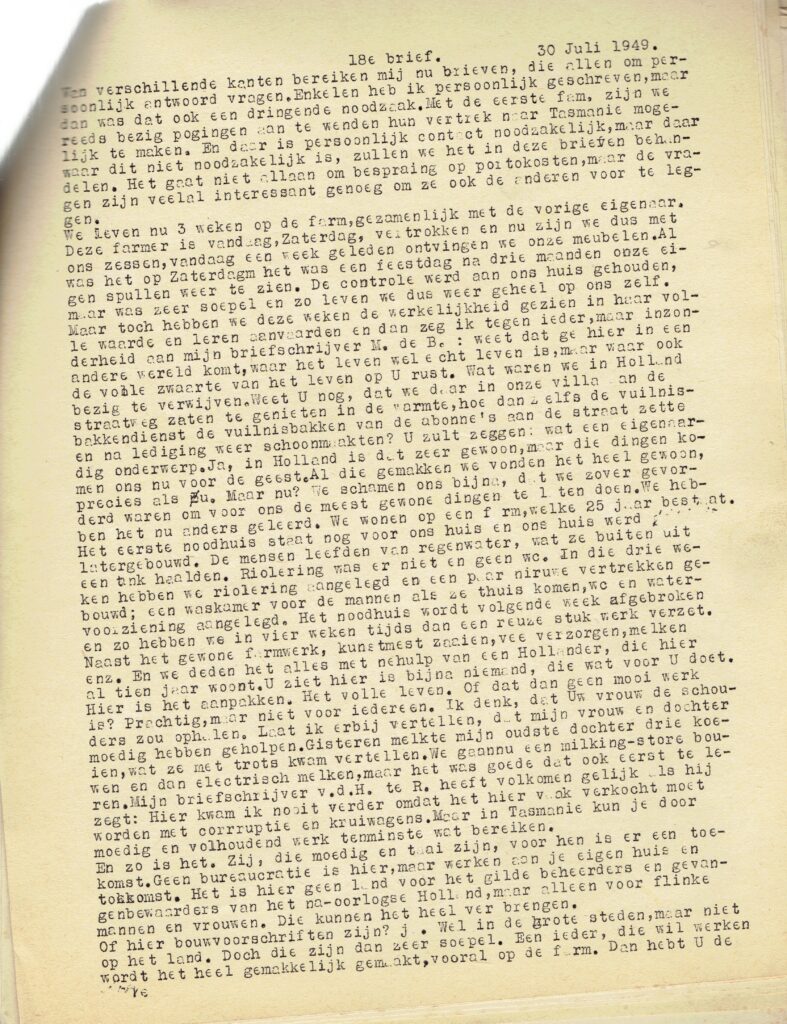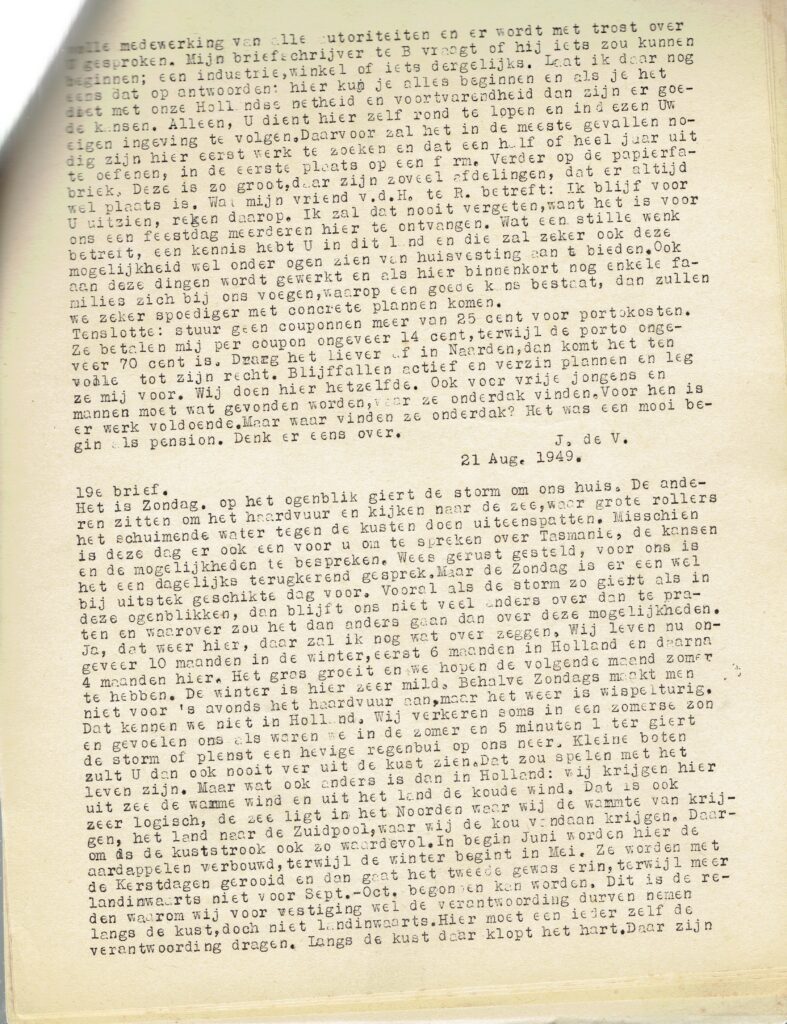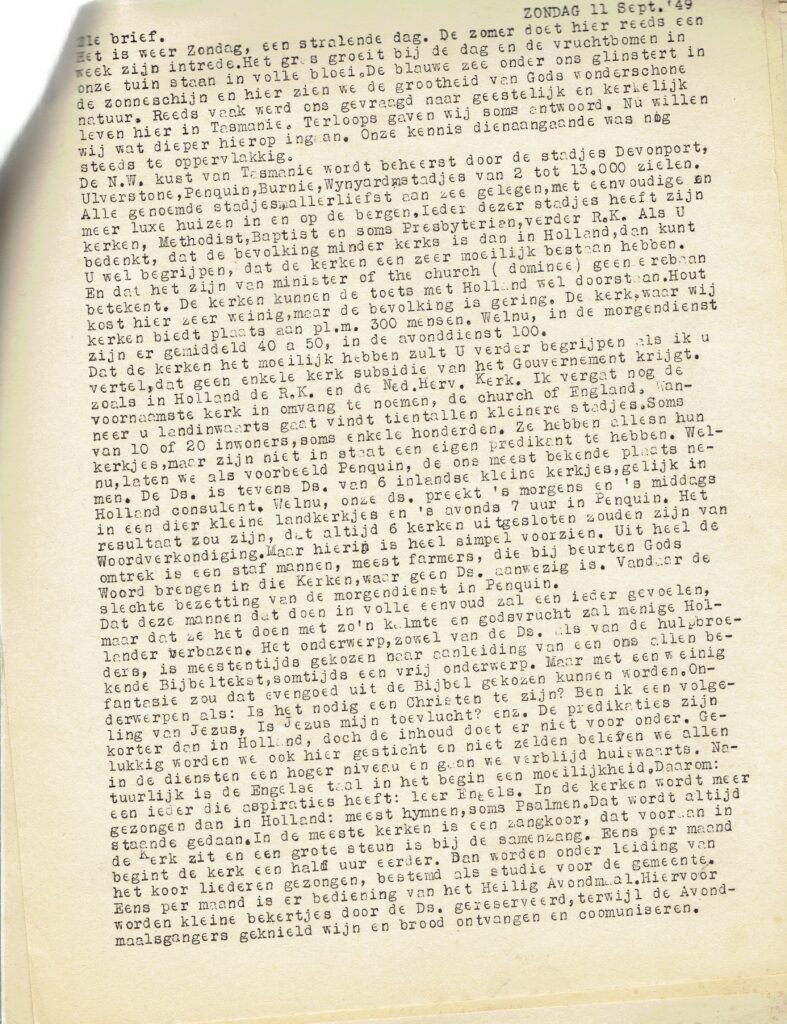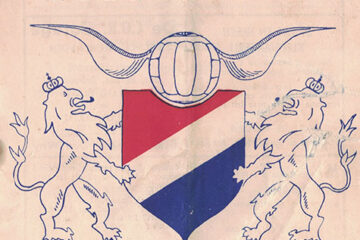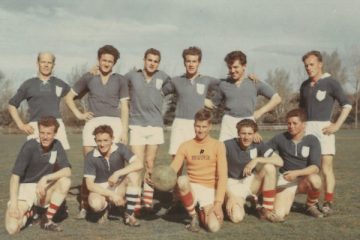Introduction
The following are 29 letters, written by one of the first Dutch migrants to Tasmania, who settled in Penguin in 1949. He composed these letters as reports for his cohort still in the Netherlands, encouraging them to prepare for their eventual migration and urging them to act quickly. It appears these letters are typed copies, possibly transcribed by the recipient in the Netherlands for wider circulation within the group.
Research by Kees Wierenga (the recipient of the printed copies) did not uncover anyone with direct knowledge of Jan de Vries or the group for whom he was writing. However, Kees did find a reference in Immigration Department documents indicating that Jan de Vries was 48 years old and born in Naarden.
Letters from Penguin – by Kees Wierenga
I have nominated “Letters from Penguin” as a title for this bundle because of the nature and
content of these letters. The author did not assign a name.
Providence
- The letters were offered to me by the Reverend S.E. (Joke) Scheepstra of Kampen, the
Netherlands. - She found contact details for me on the internet, and when I agreed to view them, she sent them
to an address in Amersfoort for me to collect. - The Reverend advised that the letters were found by her in the attic of her parents’ house when
she cleaned out the house after their death
[The Reverend also offered one additional detail: the Resistance worker who migrated to Australia
from Kampen was called Jan Kroeze. She was not able to identify any of the individuals referred
to by initials in the letters.
(Mr R of B is an industrial chemist. Mr S in Kampen is described as knowledgeable. F. (mogelijk uit Naarden), K. uit S.,B. uit Z., dr V. in E., B. in K., D. in B., fam. D. van V., vd H. van R, doen bij mij op dit moment geen belletjes rinkelen. Maar ik zal op zoek gaan naar naam & adreslijsten van mensen die, net als mijn ouders, aktief waren geweest in het verzet in LO en LKP).]
The Document
- The document is a collection of letters written in the period 28 May 1949 to 11 Sept. 1949, a total of 29 pages.
- The pages are not numbered.
- They are typed, not handwritten.
- The paper has never been folded and is much heavier than airmail paper.
- The entire set is stapled together in one corner.
- Some sheets have portions of letter from two dates.
I suggest the copy we have is a transcript from an original airmail letter, typed for circulation
amongst the cohort to whom it is addressed, or perhaps typed after all letters were received.
The bundle was donated to the Tasmanian State Archives (Community records) by me in August
2024.
A copy of the bundle is available on the DACC website. A translation into English has been made by me, with assistance from my colleague Ali Stam, who noted ‘the original Dutch is poor’ in parts. This is probably not a reflection of the abilities of the author, but of a mind that works faster than the pen, a lack of word processing machinery, and possible typos by the transcriber.
Author
The author of the work is a man called Jan de Vries. From Department of Immigration records we
know he was born in 1901. He probably lived in Naarden, and may have been involved in
providing clothing for the German Army during their occupation of the Netherlands.
He migrated with his wife (Johanna) and four teenage children, travelling with Air Ceylon, arriving
17 May 1949. (Dept.Imm. records).
Both the Police and ASIO report, on his application for naturalisation, a disquiet about de Vries
which they failed to identify. I suspect this concerned his display of wealth. Six airfares to
emigrate, no visible income for several months after arrival, the purchase of a farm, hiring of
labour, establishing a shop in Burnie for his daughters to manage, and owning a car, all
demonstrated access to a large amount of cash. How was this possible considering the limits
placed by the Dutch government on cash that migrants could take with them. Was it a question
of timing, or deceit, or ???
When Jan de Vries applied for naturalisation there were three Dutch migrants in Penguin with that
name. The first kept his name, the others gained the monikers “lange Jan” and “dikke Jan” in the
Dutch community.
Context
This bundle of letters is not unique. A similar bundle, albeit more informative, was written from
Kingston (see Dutch Migration to Tasmania in 1950: Motivation, Intention and Assimilation
[Kees Wierenga 2005], also Letters from Tasmania [Kusha Bolt, 2015]. The authors of both sets
did meet in August 1951 in Penguin. The Penguin and Kingston groups had quite different
intentions and outcomes, which may have coloured the conclusion by the Kingston scouts, which
was similar to that in the ASIO and Police report.
It is feasible that de Vries and his cohort were familiar with groups of Dutch migrants to North
America, particularly Canada, in the 1800s, and prior to WWII. The aims of the Penguin cohort
display similarities with the intentions of the groups that settled in North America, albeit with
diminished fervour and conviction.
Synopsis
Jan de Vries was the scout for a cohort of like minded people who were contemplating emigration
to Tasmania. Jan knew a Dutchman already there, well enough to be his guest for several weeks,
but this individual is not identified in the letters.
Jan expected to find natives living in huts in a jungle setting, and intended to establish a Dutch
settlement, perhaps even a village, with his cohort.
The letters are, in the first instance, a description of north west Tasmania, with details to the
nearest £/s/d of everything from the cost of land, the price paid for potatoes, the cost of lace
curtains, and everything in between.
In the second place, he constantly encourages his potential colleagues to advance their
emigration plans, to make haste and seize the multiple opportunities available (main motivation).
In the third place, he describes his experience of church life in Penguin and Burnie, and his
longing for a church service in Dutch, so that they and those to come could understand
everything.
Relevance
Some 12 months after settling in Penguin, Jan decided that the music of the Methodist Church
was excellent, but the balance of their offering, especially youth programs, were insufficiently
‘meaty’. He convinced six other migrants of the need to establish a Reformed Church, and to
pledge a donation of £1 per week each to pay for a minister (tradesmen earned about £7 per
week at this time) This resolution and some of the consequences of this action is discussed in
Shaping Kingston: the story of God’s children in Kingston [Kees Wierenga, 2019].
Jan also mentions an allowance available from the Australian Government for “illegal workers”.
This is currently being investigated by Marijke van Faassen.
The bundle also offers compare and contrast material for future studies of group migration.
Kees Wierenga
October 2024


